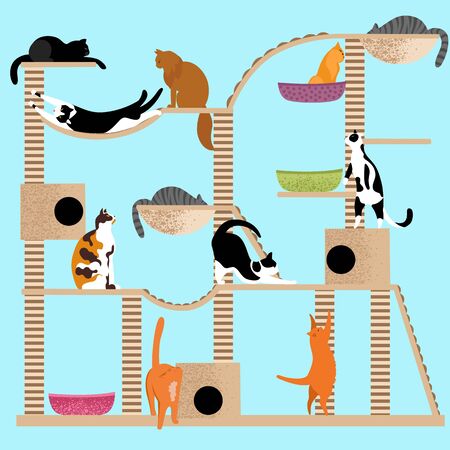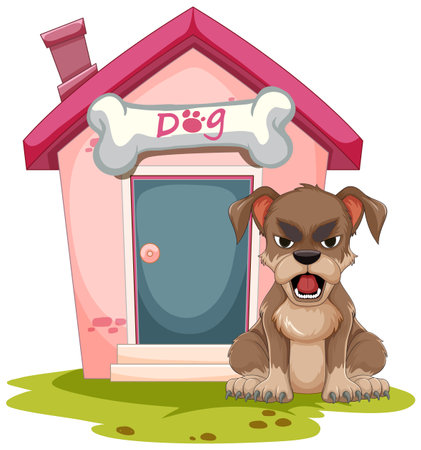1. Inspect and Maintain Your Fence Regularly
Keeping your pet safe starts with ensuring your fence is secure and well-maintained. Even a small gap or loose board can become an escape route for a determined pet. Regular inspections help identify weak spots before they become a problem.
What to Look For During Inspections
Check your fence for the following issues to prevent your pet from squeezing through or breaking out:
| Issue | Potential Risk | Solution |
|---|---|---|
| Gaps between boards or panels | Pets can squeeze through or dig under | Seal gaps with additional wood, wire, or mesh |
| Loose or broken boards | Pets can push through weak sections | Nail or screw boards back into place, replace if needed |
| Weak fence posts | The entire fence could collapse over time | Reinforce posts with concrete or metal stakes |
| Erosion at the base of the fence | Makes it easier for pets to dig underneath | Add rocks, bricks, or extra fencing along the bottom |
Create a Routine Inspection Schedule
Avoid unexpected escapes by setting a regular schedule to inspect your fence. A quick check every month and a thorough inspection every few months will help you stay ahead of any potential issues.
Signs That Your Pet Might Be Trying to Escape
- Pawing or scratching near certain areas of the fence
- Dirt piles near the base (indicating digging)
- Biting or chewing on wooden sections
- Anxiety or excessive pacing along the fence line
A Secure Fence Means Peace of Mind
Your pet’s safety depends on how well your fence holds up. By staying proactive with inspections and repairs, you’ll create a secure environment that keeps your furry friend safe at home.
2. Secure Gates with Pet-Proof Locks
Gates are one of the most common escape points for pets, especially if they aren’t properly secured. Even a small gap or a weak latch can be enough for a determined pet to push through and make a break for it. To prevent this, its important to use pet-proof locks and self-closing mechanisms.
Choose the Right Locking Mechanism
Not all gate locks are created equal when it comes to keeping pets safely contained. Some locks can be easily nudged open by a curious dog or a clever cat. Consider using the following locking options:
| Lock Type | How It Helps |
|---|---|
| Self-Closing Hinges | Automatically close and latch the gate behind you, ensuring its never left open accidentally. |
| Slide Bolt Latches | More secure than simple hook latches, as they require manual sliding to unlock. |
| Combination Locks | Prevents pets from pushing the latch open and adds an extra layer of security. |
| Spring-Loaded Latches | Snaps shut automatically and is harder for pets to manipulate. |
Install Locks at the Right Height
If you have a larger dog that likes to jump or a smart pet that has learned how to paw at latches, installing locks at a higher level can help prevent them from reaching it. Place locks at least chest-height for large dogs and consider using double-locking mechanisms for added security.
Regularly Check Your Gate Security
Over time, gates can become loose due to wear and tear or weather conditions. Make it a habit to regularly inspect your gate’s hinges, latches, and overall stability. Tighten any loose screws, replace worn-out locks, and ensure that the gate always closes completely after use.
Add Extra Barriers if Necessary
If your pet is particularly persistent about escaping through gates, additional barriers might be needed. You can install:
- Puppy gates: Useful for small dogs who might squeeze through gaps in larger gates.
- Mesh covers: Prevents pets from seeing something exciting outside that might tempt them to escape.
- Bumper guards: Stops pets from pushing against weak spots in the gate structure.
By securing your gates with pet-proof locks and reinforcing potential weak spots, you can significantly reduce the risk of your pet slipping out unnoticed. A little effort in gate security goes a long way in keeping your furry friend safe at home.

3. Use Barrier Extensions or Dig-Proof Measures
Pets can be surprisingly determined when it comes to escaping, whether they are jumping over fences or digging underneath them. To keep your furry friend safe, you need to reinforce your barriers with extensions and dig-proof measures.
Install Coyote Rollers or Fence Extenders
If your pet tends to jump over fences, consider installing coyote rollers or fence extenders. These additions make it harder for pets to gain the leverage needed to clear the fence. Here’s a comparison of both options:
| Barrier Type | Description | Best For |
|---|---|---|
| Coyote Rollers | Metal bars that spin when an animal tries to climb over them. | Cats and dogs that attempt to climb or jump fences. |
| Fence Extenders | Angled or vertical extensions that add extra height to a fence. | Larger dogs or high-jumping breeds. |
Bury Wire Mesh to Prevent Digging
If your pet is more of a digger than a jumper, you’ll need to secure the ground beneath your fence. One of the best methods is burying wire mesh along the base of the fence.
How to Install Dig-Proof Barriers:
- Bury wire mesh: Dig a trench along the base of the fence and bury wire mesh at least 12 inches deep.
- L-shape barrier: Bend the buried mesh outward in an L-shape to discourage digging.
- Paving stones: Placing heavy stones along the base can also prevent escape attempts.
Taking these extra precautions will help ensure your pet stays safe and secure within your yard while giving you peace of mind.
4. Reinforce Windows and Balcony Railings
Windows and balconies can be unexpected escape routes for pets, especially cats and small dogs. Ensuring these areas are secure will help prevent accidental falls or escapes.
Secure Window Screens
Pets love to perch on windowsills to watch the outside world, but weak or loosely fitted window screens can be a danger. Make sure your window screens are sturdy enough to withstand a pet leaning against them.
Tips for Securing Window Screens:
- Use heavy-duty screens designed for pets.
- Regularly check for loose or damaged screens and replace them if necessary.
- Consider adding an extra layer of reinforcement with screen guards.
Install Pet-Proof Window Locks
If your pet is curious and tends to push against windows, installing pet-proof window locks can prevent accidental openings. These locks keep windows from being pushed open too far, reducing the risk of escapes.
Types of Pet-Proof Window Locks:
| Type | Description |
|---|---|
| Sliding Window Locks | A simple clamp that prevents windows from sliding open beyond a safe limit. |
| Sash Window Stops | A device that stops windows from being raised too high. |
| Latch Locks | A secure latch mechanism that requires manual unlocking. |
Reinforce Balcony Railings
If you have a balcony, ensure that railings are secure and gaps are small enough to prevent pets from slipping through. Adding plexiglass panels or mesh barriers can help create a safer environment for your pet.
Balcony Safety Enhancements:
- Install clear acrylic panels along railings to block gaps.
- Add pet-friendly mesh to prevent small pets from squeezing through.
- Avoid placing furniture near railings that pets could use to climb over.
Taking these precautions will significantly reduce the chances of your pet escaping through windows or balconies while keeping them safe indoors.
5. Provide Mental and Physical Stimulation
A bored pet is more likely to attempt an escape. If your pet doesn’t get enough mental and physical stimulation, they may try to find excitement elsewhere—often by attempting to escape through fences, gates, or windows. Keeping them engaged with toys, exercise, and enrichment activities can help reduce their desire to roam.
Engaging Toys and Activities
Providing a variety of toys and activities helps keep your pet entertained and less likely to seek adventure outside. Interactive toys, puzzle feeders, and chew toys can offer hours of mental stimulation.
| Toy Type | Benefits |
|---|---|
| Puzzle Feeders | Encourages problem-solving and slows down eating |
| Chew Toys | Helps with anxiety relief and dental health |
| Treat-Dispensing Balls | Keeps pets engaged while rewarding them with treats |
| Interactive Laser Toys | Mimics hunting behavior for cats and some dogs |
The Importance of Daily Exercise
A well-exercised pet is a happy pet! Regular exercise reduces stress, burns off excess energy, and decreases the likelihood of escape attempts.
Exercise Recommendations by Pet Type:
- Dogs: At least 30–60 minutes of daily walks, playtime, or training sessions.
- Cats: Interactive play with wand toys, climbing trees, or laser pointers.
- Small Pets (rabbits, guinea pigs): Safe indoor or outdoor play areas with tunnels and hideouts.
Create an Enriching Environment
An engaging home environment can prevent boredom-related escapes. Ensure your pet has access to different textures, scents, and experiences within a secure space.
Tips for Enrichment:
- Add Perches & Hiding Spots: Cats enjoy elevated spaces like cat trees or window perches.
- Create a Digging Box: Dogs love digging—provide a designated sand or dirt area in the yard.
- Scent Games: Hide treats around the house or yard for your pet to find.
- Audiovisual Stimulation: Some pets enjoy calming music or nature videos.
If your pet remains mentally stimulated and physically active, they’ll be far less likely to seek adventure beyond your secure fences, gates, and windows!


